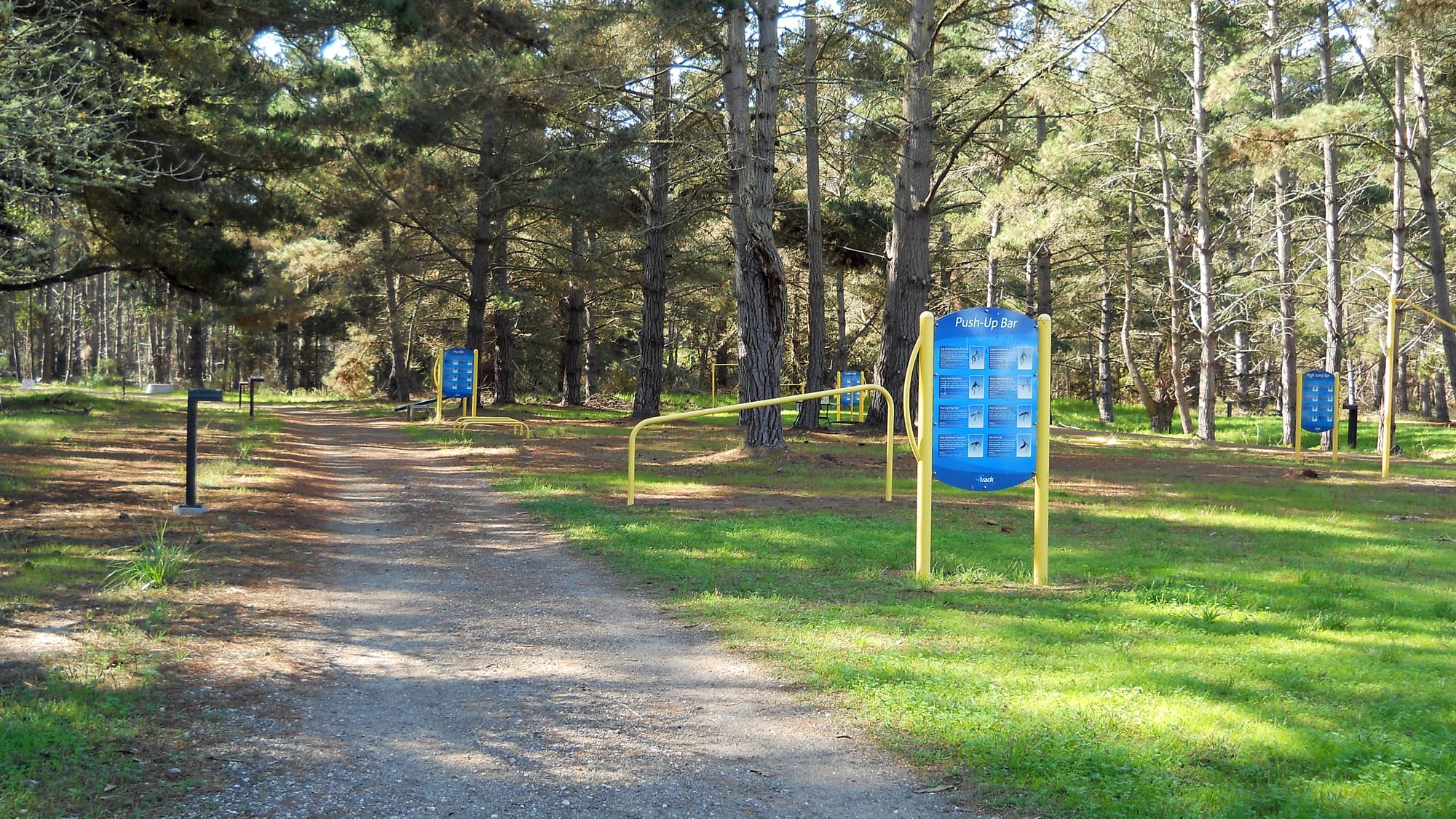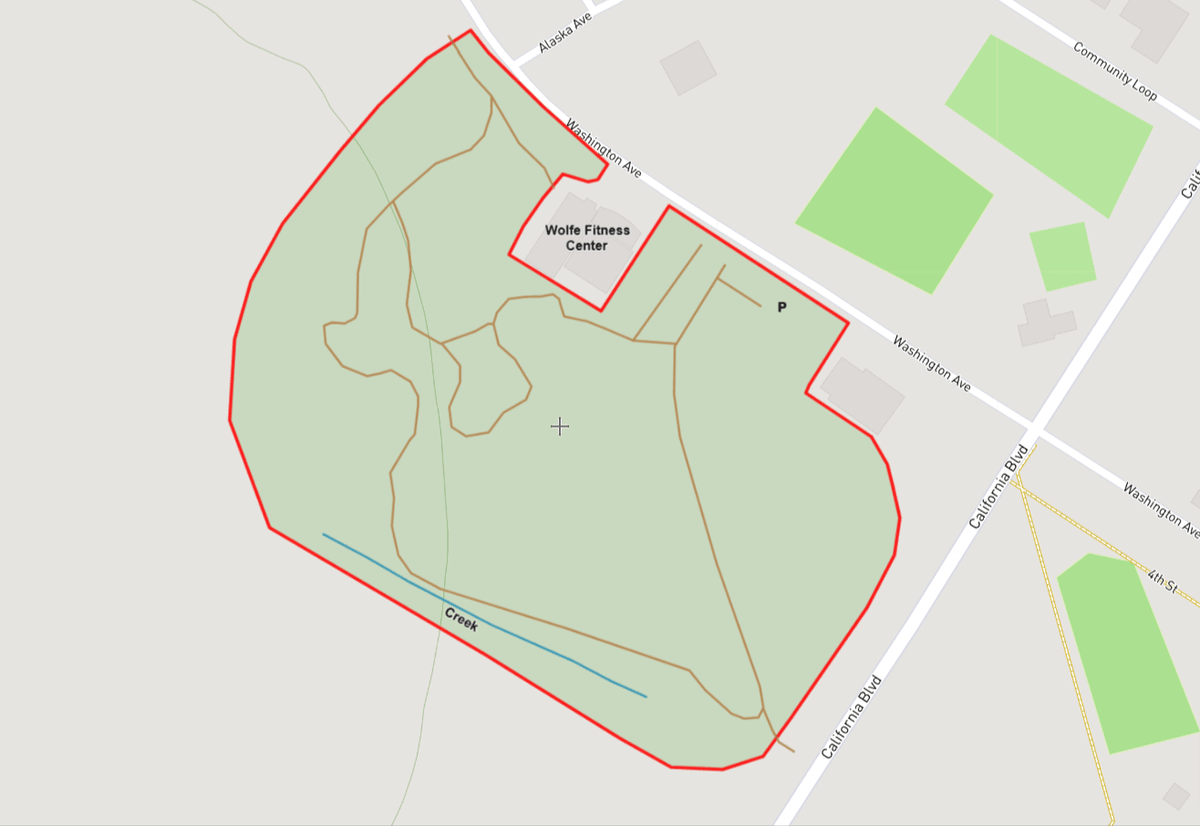Vandenberg SFB (restricted access)--Fitness Center Trail

Vandenberg SFB (restricted access)--Fitness Center Trail
Fitness Trail mapVandenberg Space Force Base Beaches
VSFB Environmental (beach status)
Tips for Birding
The best seasons for birding are during spring and fall migration. There is a mix of habitats here consisting of tree-lined pathways, and other more open areas with chaparral and brush. Trees include pines, eucalyptus, a few live oaks, and other smaller tree varieties. Many of the pines tower above the pathways. The dense underbrush is good for thrushes and wrens. In the open areas to the west, there are several burned pine snags due to a recent wildfire which has resulted in exposed perches good for flycatchers. When walking the trails listen for Chestnut-backed Chickadees which are often vocal and may be a good indicator of a mixed-species flock in the area.
Birds of Interest
Resident birds typical of coastal forest habitats are found here and include Spotted Towhee, Dark-eyed “Oregon” Junco, Western Flycatcher (spring and summer), Chestnut-backed Chickadee, Bushtit, and Oak Titmouse. Fall migration can be very productive as migrant warblers, flycatchers, and vireos move through the trees on their way south. Western migrants recorded in the fall include Hermit Warbler, Black-throated Gray Warbler, Wilson’s Warbler, Western Wood-Pewee, and Olive-sided Flycatcher among several others. Winter may bring Red-breasted Nuthatch and Brown Creeper to the areas with pines. Hermit Thrush, Yellow-rumped Warbler, and Townsend’s Warbler are common in winter. Much of the property is good for woodpeckers including Hairy Woodpecker and Northern Flicker. The very narrow creek (more of a wet ditch) along the south edge of the trail complex is reliable for Song Sparrow, and Common Yellowthroat, and is also an attractant to many birds for water and bathing. During wet periods the creek has healthy bulrushes and cattails, as well as a few arroyo willows.
About this Location
NOTE - This is a restricted access Hotspot found within the Cantonment Area of Vandenberg SFB. It is only accessible to visitors possessing a VSFB pass.
The Fitness Trail loop is located in a densely forested area behind the Duane Wolfe Fitness Center and meanders through trees and open areas to a distance of about one mile. The main trail entrance is to the west of a dirt parking area between the Fitness Center and the Annex building on Washington Ave.
Enter the trail beyond the fitness equipment. The trails are wide, flat, and lined with lighting bollards.
This is usually a good spot for birding since there is little activity from walkers and runners which keeps the entire area mostly undisturbed.
About Vandenberg Space Force Base
See all hotspots at Vandenberg Space Force Base
Vandenberg Space Force Base is located in western Santa Barbara County and makes up a significant portion of coastal north county. VSFB totals some 99,579 acres in size and includes 42 miles of pristine, undeveloped coastline, 9,000 acres of sand dunes, and 5,000 acres of wetland habitats. The topography of Vandenberg SFB is varied and includes hills, mountains, terraces, floodplains, mesas, canyons, and rocky headlands. The highest point on VSFB is Tranquillion Peak located on south base and reaches a height of 2,297 ft. The base contains some of the highest quality coastal habitat remaining in southern or central California.
VSFB also contains a number of freshwater environments including the Santa Ynez River, San Antonio Creek and Barka Slough, Shuman, Cañada Honda, Bear, and Jalama Creeks, as well as man-made lakes. Riparian woodlands are found along these river courses and streambeds and are particularly important for migrating and nesting birds. Because of its protected nature, none of the backcountry areas of VSFB are open to the public or to any kind of development.
Coastal bluffs and rocky headlands provide important roosting and nesting habitat for a number of seabirds. Nest sites are found along cliffs and on offshore rocks along the coast from Purisima Point on north base, to Point Pedernales and Destroyer Rock, and Point Arguello on south base. Coastal access is only available at Ocean Park (Santa Ynez River Estuary), and Surf Beach to the general public. Seasonal restrictions are in place for Ocean Park, Surf, Wall, and Minuteman beaches annually from March 1 to September 30 as part of the annual program to protect the threatened Western Snowy Plover.
The main cantonment (urbanized) area of VSFB located on north base consists of residential, industrial, community service, administrative, and recreational use areas. This cantonment area lies within the restricted security zone of the base and is only accessible to personnel with a base pass. Several VSFB birding hotspots are found within this security zone and are therefore off limits to the general public, while other Hotspots are accessible to the public by county roadways but are still found within the boundaries of the base.
Vandenberg SFB hotspots can be categorized as follows:
1. Publicly accessible hotspots found within the Vandenberg SFB boundary. Birders are subject to the authority of VSFB security forces while visiting these locations. Examples of publicly accessible Hotspots include Barka Slough, Triangle Pond, and Surf Beach. These hotspots do not have "restricted access" in their names.
2. Restricted-access hotspots found within the security zone of Vandenberg SFB. These areas are only accessible to visitors possessing a VSFB pass. Examples include Lake Canyon Ponds, Brown's Beach to Lions Head, and Point Pedernales. These all have "restricted access" in their names.
Base passes will not be issued to the general public at this time and visitors must be “sponsored” onto VSFB by individuals who have this privilege. Birders are permitted to visit any of the hotspots listed as publicly accessible as described above and as indicated on the various hotspot pages found in this guide.
Notable Trails
Bird the trails under the tallest trees, and the stretch of trail next to the creek channel.
Features
Restrooms on site
Last updated July 30, 2023
 Suggested Fitness Trail Hotspot Boundaries
Suggested Fitness Trail Hotspot Boundaries